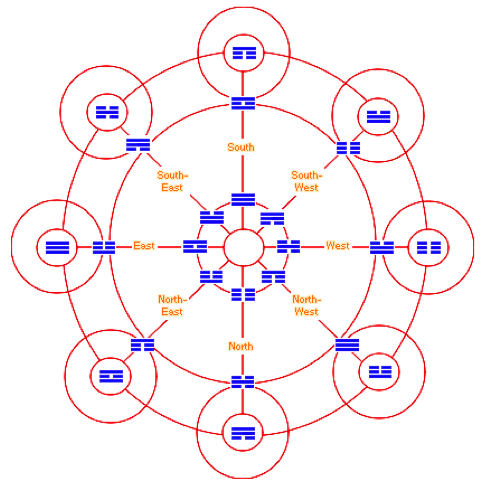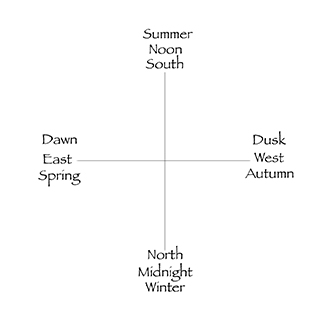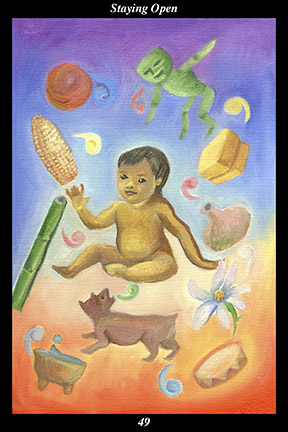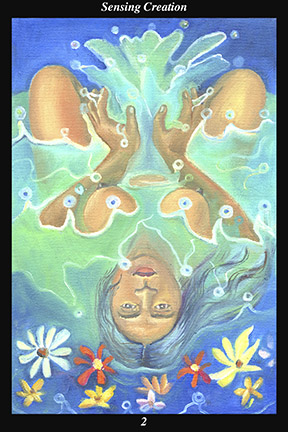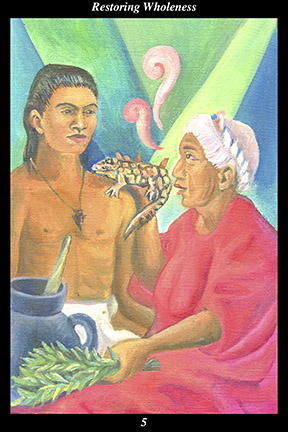The Spirit of the Age has reversed course again and we have entered a new Dynasty. Unlike the dynasties of old that ruled one nation or one people, this time it is an egalitarian Dynasty, a global shift of awareness, setting free the potential of all nations and all people for the next 5,000 years.
The old Dynasty of nationalism, aggression and self-interest is overturned now by time. In its place, like billions of seeds fallen on the fertile plain of history, the first signs of the new age of enlightened peers reveal the emerging change to all. Like the light from a distant nova that takes years to reach us, the effects of this spiritual revolution are already on their way.
We have entered the Dynasty of the Open Secret. Founded in seclusion by a group of priest-diviners on the Summer Solstice of 1998, it will be celebrated worldwide on the Winter Solstice of 2012 and usher in changes that will carry us all into the Golden Age of Humanity.
As discussed in the previous post, we follow here an ages-old tradition of legitimizing the new Dynasty by introducing a new version of the I Ching that more accurately reflects the vision and ethics of our age while still maintaining the shamanically-charged power of the Oracle. As explained there, it is the periodically revised Sequence of the 64 hexagrams—the mysterious order into which its 32 pairs of hexagrams are arranged—that renews cyclic time and restores humaneness to the social order.
This new version of the Oracle is based on a new arrangement of the hexagrams named for its Dynasty: The Open Secret Sequence.
In the diagram above, the Fu Shi, or Earlier Heaven, arrangement occupies the centermost circle, while the King Wen, or Later Heaven, arrangement occupies the second circle. Even though the Fu Shi is considered the Primal Arrangement of the eight elemental forces of change that manifest this world, research indicates that it may have actually been discovered many centuries after the King Wen. The Fu Shi arrangement may in fact be related to the work of the great diviner Shao Yung, whose work inspired Leibniz to marvel that the binary code had been discovered in China long before his own discovery.
The Fu Shi arrangement is a static one that pairs the trigrams across from one another—the trigram Heaven, made of all solid lines, for instance, is paired with its opposite-complement, Earth, made of all broken lines. By contrast, the King Wen arrangement, which delineates a dynamic process of growth and decay, is read in a clockwise circular manner: Beginning with Thunder (Shock, Movement) in the East of the second circle and ending with Mountain (Stillness, Death) in the North-East, each of the trigrams spurs the next in the cycle of organic development in the lives of societies, organizations, ideologies, relationships, and individuals. The Fu Shi, then, is thought of as the eternally paired dualities whose harmonious balance gives rise to the King Wen arrangement of the invisible forces giving rise in turn to the phenomenal world of change.
Tradition has it that the trigrams of the Fu Shi arrangement shine through those of the King Wen. In other words, trigrams occupying the same compass point overlay one another, illuminating different aspects of the same sacred metaphor for the archetypal change that manifests in every life. They share the same space of time and are enriched by their association with their shared compass points.
Diagram 2 shows how the temporal flux of the seasons and the day are superimposed on the four cardinal directions of space. In this way, the developmental cycle of beginning, expanding, contracting, and return is mapped onto East, South, West, and North, respectively. The eight compass points of the map of change are, then, the archetypal placeholders that charge their associated trigrams with oracular power, since it is the compass points themselves that comprise the real-world ordering principle of the flow of time.
While it is the shamanically-charged Sequence of 64 hexagrams that legitimizes a new Dynasty, in other words, it is the theurgic mapping of the trigrams onto the eight compass points that legitimizes that new Sequence. That ritual act, which produced the Open Secret arrangement of the trigrams, was performed by a group of priest-diviners at the kairotic moment of noon on the Summer Solstice of 1998.
Returning to Diagram 1 now, we see that its outermost circle is occupied by the Open Secret arrangement of the trigrams. Whereas the Fu Shi arrangement is static and the King Wen moves in a circular clockwise manner to show the natural unfolding of phenomena, the Open Secret arrangement is read in a circular counter-clockwise direction to show the way of reversing the universal natural tendency toward disorder.
Because the past Dynasty was founded on the inevitability of entropy in social institutions and human relations, it is called the Dynasty of Fate. It has been ruled by those who accept such inevitable disintegration and benefit from it. Using their influence to exacerbate the natural trend toward disorder, they have made the fate of perpetual decline the common dwelling place of the governed. By “decline” is meant the descent of civilization into ever darker regions of the collective human psyche: ever-shifting wars, church-and-state sponsored hatred of other peoples, creation of urban centers that assure alienation from nature, unjustifiable disparity of standard of living, worldwide poverty and contamination of water sources, self-destructive degradation of the environment and animal habitat, governmental misuse of technology and media to to cow its populace into accepting increasingly authoritarian forms of control, and so on. By tradition, this was called by the priest-diviners weeping for the fate-driven herd. And it was called by the sages crying out against waste of life.
In contrast, the newly-emerging Dynasty of the Open Secret is founded on the principle of the conservation of life. It recognizes the equality of all life and acts accordingly. It honors human life, animal life, and plant life, transforming the present civilization into one in which human beings wrench loose from the iron grip of Fate and make of this world a paradise for all life. This, the priest-diviners say, is what the Oracle has foreseen.
Fate is the destructive physical force of disorder in the universe and must be struggled against if we are not to fall irrevocably into ruin. This is called by the sages protecting the flickering flame from the void of night. And it is called by the priest-diviners feeding the bonfire that will outlast the dark.
For while Fate is the gravity that forever pulls us downwards and darkwards, the Oracle is flight upwards and lightwards: Whereas Fate embodies the certainty of ongoing deterioration, the Oracle embodies the acausal nature of meaningful coincidence. It is in this way that the Oracle interrupts the predetermined course of Fate by identifying those kairotic moments—those crucial turning points appointed by a higher order of cause-and-effect—in which darkness might be converted to light.
What is the mechanism by which the hexagrams are charged with that oracular power?
The Open Secret Sequence of the 64 hexagrams is derived directly from the King Wen Sequence by substituting the Open Secret arrangement of the trigrams for those of the King Wen arrangement. In other words, the trigrams in the outermost circle of Diagram 1 are substituted for those in the second circle. In this way, the magically-charged order of the 32 pairs of hexagrams underlying the King Wen Sequence is maintained in the Open Secret Sequence.
But as explained in the previous post, the legitimizing of the new Dynasty requires more than a new Sequence of hexagrams—it also requires a new interpretation of the hexagrams that reflects the vision and values of the emerging Dynasty. It requires, in other words, establishing a new voice for the Oracle.
The Toltec I Ching is the first speaking of that voice. Based on the Open Secret Sequence of the hexagrams, it uses the symbology of the ancient indigenous peoples of the Americas to give voice to the sacredness of all life upon which the new Dynasty is founded.
The following diagram compares the order and names of the hexagrams in The Toltec I Ching and the traditional King Wen version—
~
Next Week: The Oracle and the War Against Fate
~
The Toltec I Ching, by Martha Ramirez-Oropeza and William Douglas Horden has just received a Silver Award in the 2010 Nautilus Awards. It recasts the I Ching in the symbology of the Native Americans of ancient Mexico and includes original illustrations interpreting each of the hexagrams. Its subtitle, 64 Keys to Inspired Action in the New World hints at its focus on the ethics of the emerging world culture.
Click here to go to the main site to see sample chapters, reviews and the link to Larson Publications for ordering the book.
~

